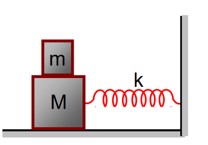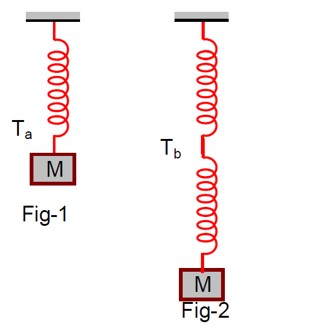The displacement of a particle is represented by the equation y = 3cos(
). The motion of the particle is
(a) Simple harmonic with period 2
/w.
(b) Simple harmonic with period π/ω.
(c) Periodic but not simple harmonic.
(d) Non-periodic.
The displacement of a particle is represented by the equation y = 3cos( ). The motion of the particle is
(a) Simple harmonic with period 2 /w.
(b) Simple harmonic with period π/ω.
(c) Periodic but not simple harmonic.
(d) Non-periodic.
-
1 Answer
-
This is a multiple choice answer as classified in NCERT Exemplar
Velocity =dy/dt=
= 3 (-2w) [-sin ( )]
= 6wsin
Acceleration a = dv/dt=
= -4w2 [3cos ( )]
A = -4w2y hence acceleration is directly proportional to displacement so it follows SHM
w’= 2w
2
T’= 2 =
Similar Questions for you
Velocity of block in equilibrium, in first case,
Velocity of block in equilibrium, is second case,
From conservation of momentum,
Mv = (M + m) v’
f? = 300 Hz
3rd overtone = 7f? = 2100 Hz
Kindly consider the following figure
K = U
½ mω² (A² - x²) = ½ mω²x²
A² - x² = x²
A² = 2x²
x = ± A/√2
Taking an Exam? Selecting a College?
Get authentic answers from experts, students and alumni that you won't find anywhere else
Sign Up on ShikshaOn Shiksha, get access to
- 65k Colleges
- 1.2k Exams
- 679k Reviews
- 1800k Answers


